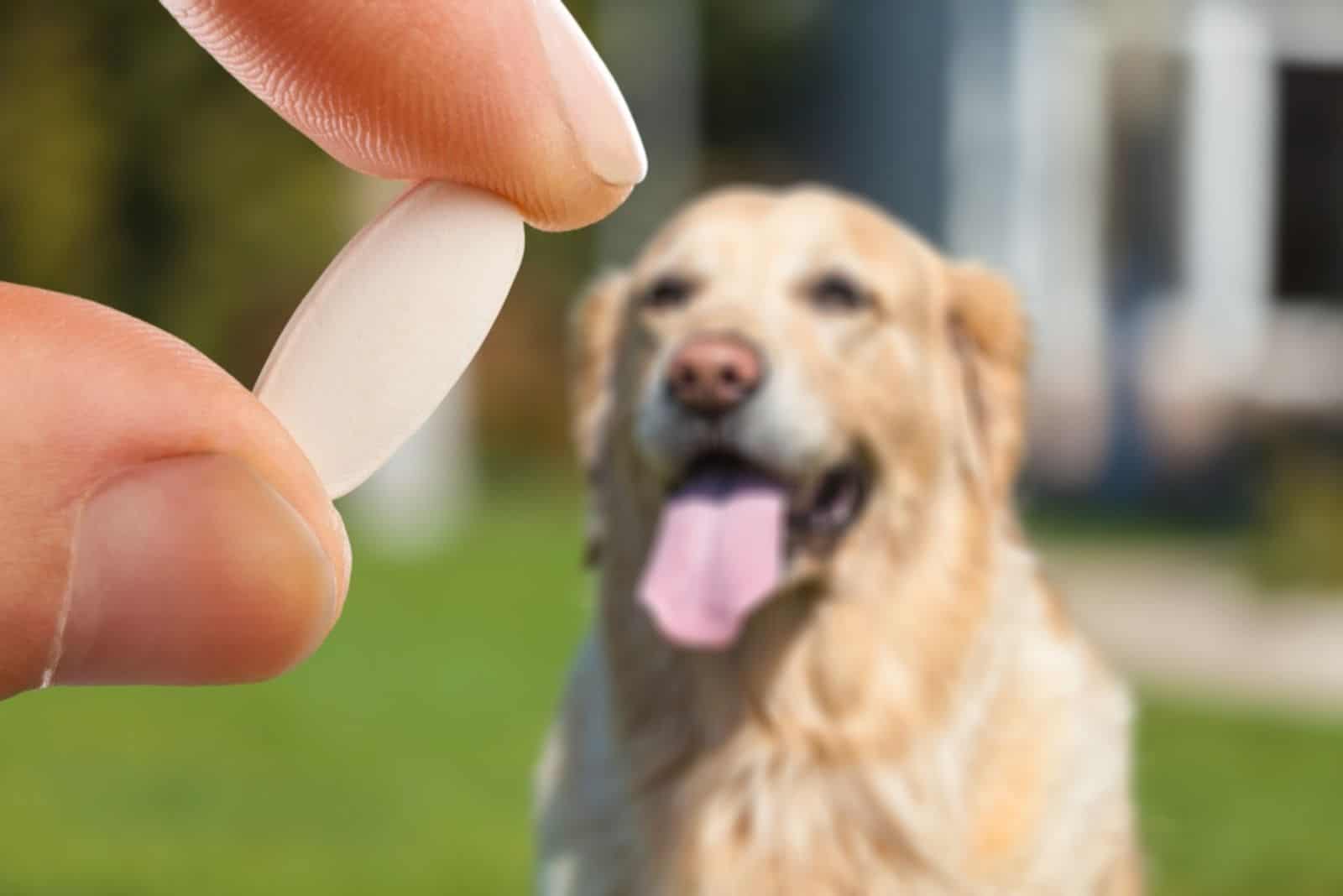One of the tick species known to carry Ehrlichia is the lone star tick, the one with a white spot on its back, looking like a star on the red carpet. But don’t be fooled by its appearance, this tick can cause more trouble than a Hollywood diva.
Another tick species that can carry the Ehrlichia bacteria is the black-legged tick, also known as the deer tick, the one that’s famous for spreading Lyme disease.
However, the most common one in German Shepherds is the brown dog tick which may also become infected by this pesky bacteria.
Ehrlichiosis is a tick-borne disease that can affect all dogs, especially our favorite working dogs. It is a very serious disease that can be lethal if not treated in time.
This is why all owners should be aware of the 5 early signs of Ehrlichia in German Shepherds. Let’s dig right into this tick-borne mystery disease!
5 Early Signs Of Ehrlichia In German Shepherds
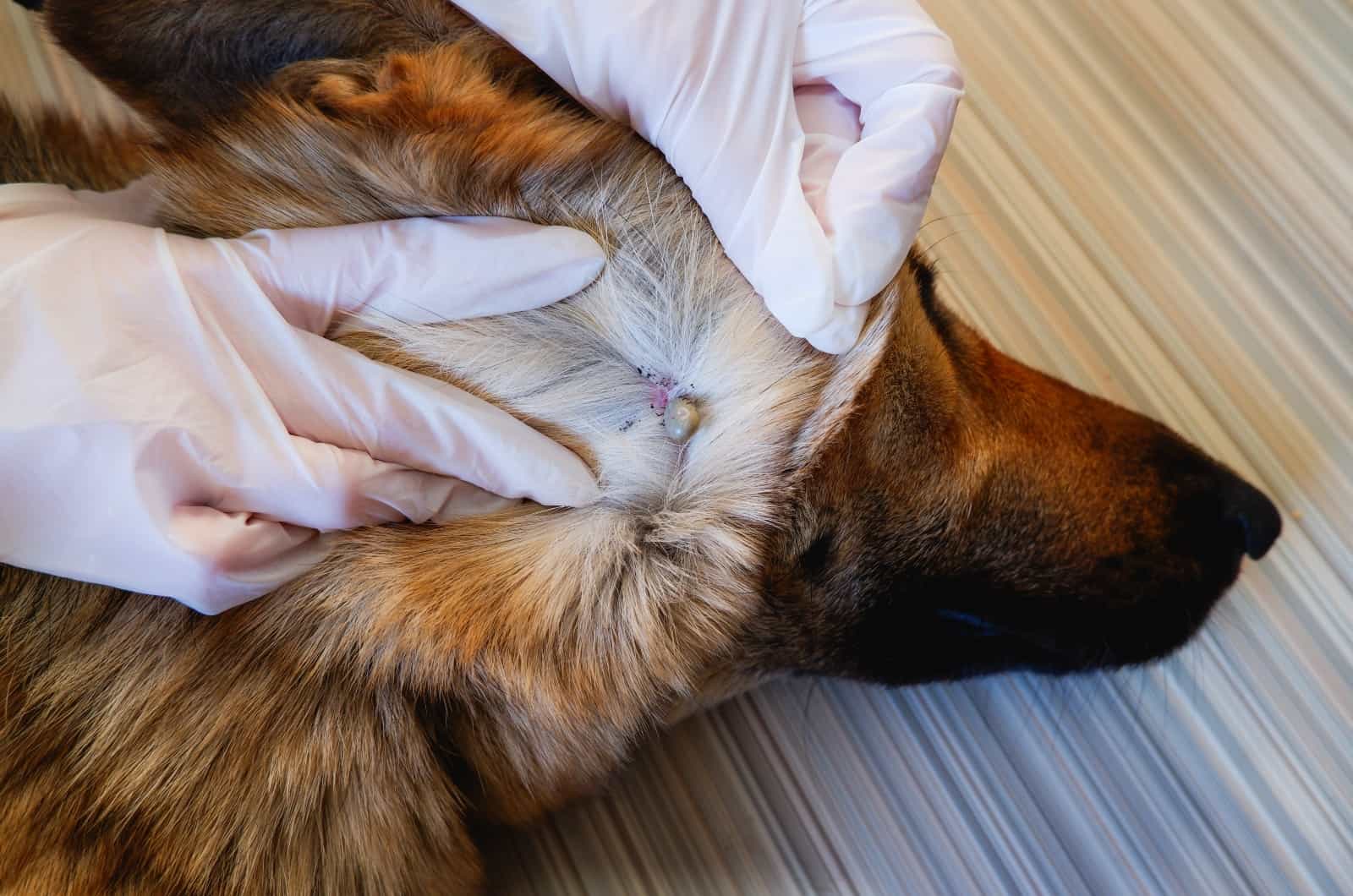
This tick-infecting bacteria was first found in military dogs in Vietnam, earning it the nickname of “Tracker Dog Disease”.
Don’t let the name fool you, this disease can be found anywhere, not just in tropical places, it’s also known as “Tropical Canine Pancytopenia“ or TCP for short. You may also stumble upon this disease under the name canine Rickettsiosis.
It’s important to know the early signs of Ehrlichia in German Shepherds so you can react as soon as possible to save your pup.
Some other related infections may lurk on the dog’s weakened immune system, so stay on the lookout!
1. Fever
Fever, the fiery bummer of a tick-borne disease! Ehrlichia bacteria, the sneaky little bugger, is the culprit behind this canine conundrum.
Your furry friend may be feeling the heat, with a high fever that just won’t quit. But don’t worry, it’s just the dog’s immune system fighting off the acute or chronic ehrlichiosis.
Weight loss, lack of appetite, and general nausea may also be in tow, but don’t let it bring you down, your GSD is in the acute phase of the battle and will come out victorious with the help of the vet’s magic potion, and your comfort.
Don’t let Ehrlichia bring the heat, call your vet and give your pup the cool relief and wellness they need.
2. Anemia
This early disease can sneak up on your furry German Shepherd companion and make them feel like they’ve been hit by a truck. Once inside the dog’s body, platelets, white blood cells, and monocytes are the favorite places where Ehrlichia canis or E. ewingii like to spend their time.
Anemia happens because the infection can cause a decrease in the number of platelets in the blood, which can lead to spontaneous bleeding or bruising.
Pale gums, weakness, respiratory distress, and fatigue, oh my! It’s like they’ve turned into a doggie vampire, but without the cool powers.
Bleeding problems that come with anemia are caused by the species of Ehrlichia that your GSD may have caught, and it’s nothing a complete blood count can’t fix.
It’s just their body’s reaction to the disease and a way of letting you know that something’s not quite right, so it’s best to consult with a DVM and get some blood tests. However, if canine anemia is in chronic stages, it can lead to bone marrow failing to produce red blood cells.
Your vet will want to check the dog’s platelet count, but don’t be alarmed if it’s a little low, as low platelet count indicates that your dog’s body is in the subclinical phase of the battle against Ehrlichia.
3. Lameness

This infected tick-borne disease can make your German Shepherd lame! Not lame, as in, not cool, but lame, as in very weak and drained.
Lameness occurs due to the bacteria infecting the dog’s joints and causing inflammation.
Wobbling and wiggling, limping and hobbling, that’s what a GSD with lameness looks like. They may be walking sideways, experiencing joint pain and stiffness, as well as losing appetite.
It’s not fun for them, and it’s not fun for you to see them like this, but don’t worry, you’re on time to take them to the animal hospital.
The recovery time will depend on the stage of the disease and the severity of the Ehrlichiosis symptoms.
You see, your pup may need to be hospitalized for a bit, but fear not, they’ll be back to their normal self in no time.
4. Lymphadenopathy
As sneaky as it is, Ehrlichia bacteria invades the lymph nodes of your pup and starts causing them to swell like balloons, giving him an unusual lumpy appearance.
Lymph nodes are located all over the body and they are responsible to help the dog’s immune system defend itself. When they become swollen, we call this canine lymphadenopathy.
Common clinical signs include having a swollen face like your GSD has been stung by a bee or had too much surgery on the nose, having a swollen belly, like he swallowed a whole watermelon, and feeling nauseous.
5. Neurological Disturbances
Your German Shepherd may be having a hard time finding his way around like he’s lost in a maze, or maybe he is having a hard time standing as if he’s on a boat in a stormy sea.
Chances are, Ehrlichia got on his nerves! With all seriousness, neurological disturbances happen because this bacteria infects the GSD’s nervous system, causing inflammation and damage to the nerve cells.
This is why the dog shows a loss of coordination, problems with balance, and even seizures.
The symptoms can be caused by the infection itself or by the dog’s immune system response to the infection.
What Is The Risk Of A Dog Being Exposed To Ehrlichia?
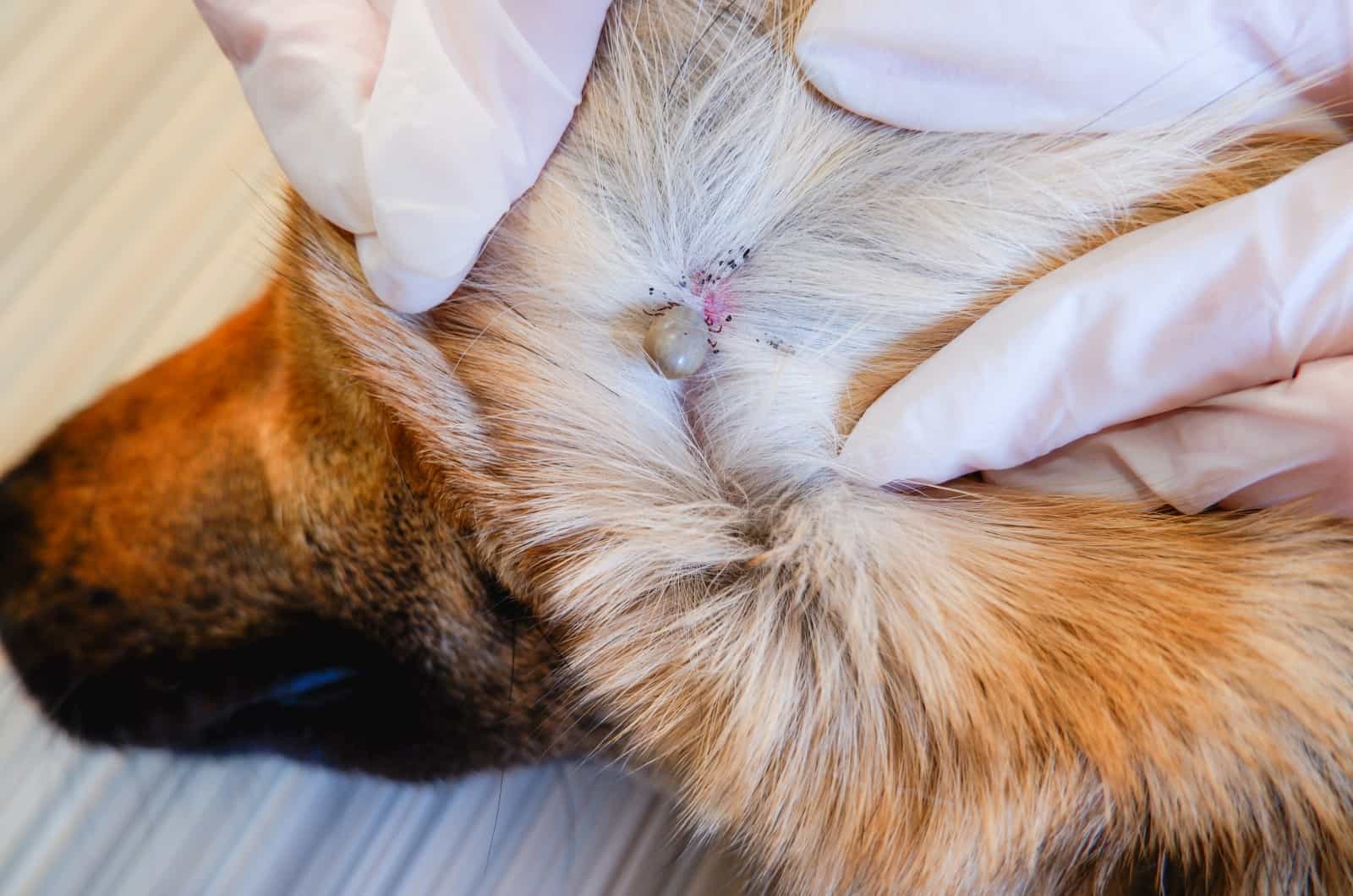
The risk of a German Shepherd dog being exposed to Ehrlichia depends on several factors, such as:
- Geographical location
- Season
- Dog’s lifestyle
- Dog’s protection
When it comes to geographical location, there are areas where dog ticks are prevalent, so the risk of a GSD being exposed to Ehrlichia is higher.
During the warm months (spring to summer), these ticks are most active.
Dogs that spend a lot of time outdoors, in wooded areas, or in tall grass, are more likely to be exposed to Ehrlichia-carrying ticks. The more your dog is out there, the higher the chances of getting exposed.
Additionally, dogs that are not protected against external parasites are at high risk of being infected by this tick-borne bacteria.
How Do I Know If My Dog Has Ehrlichia?
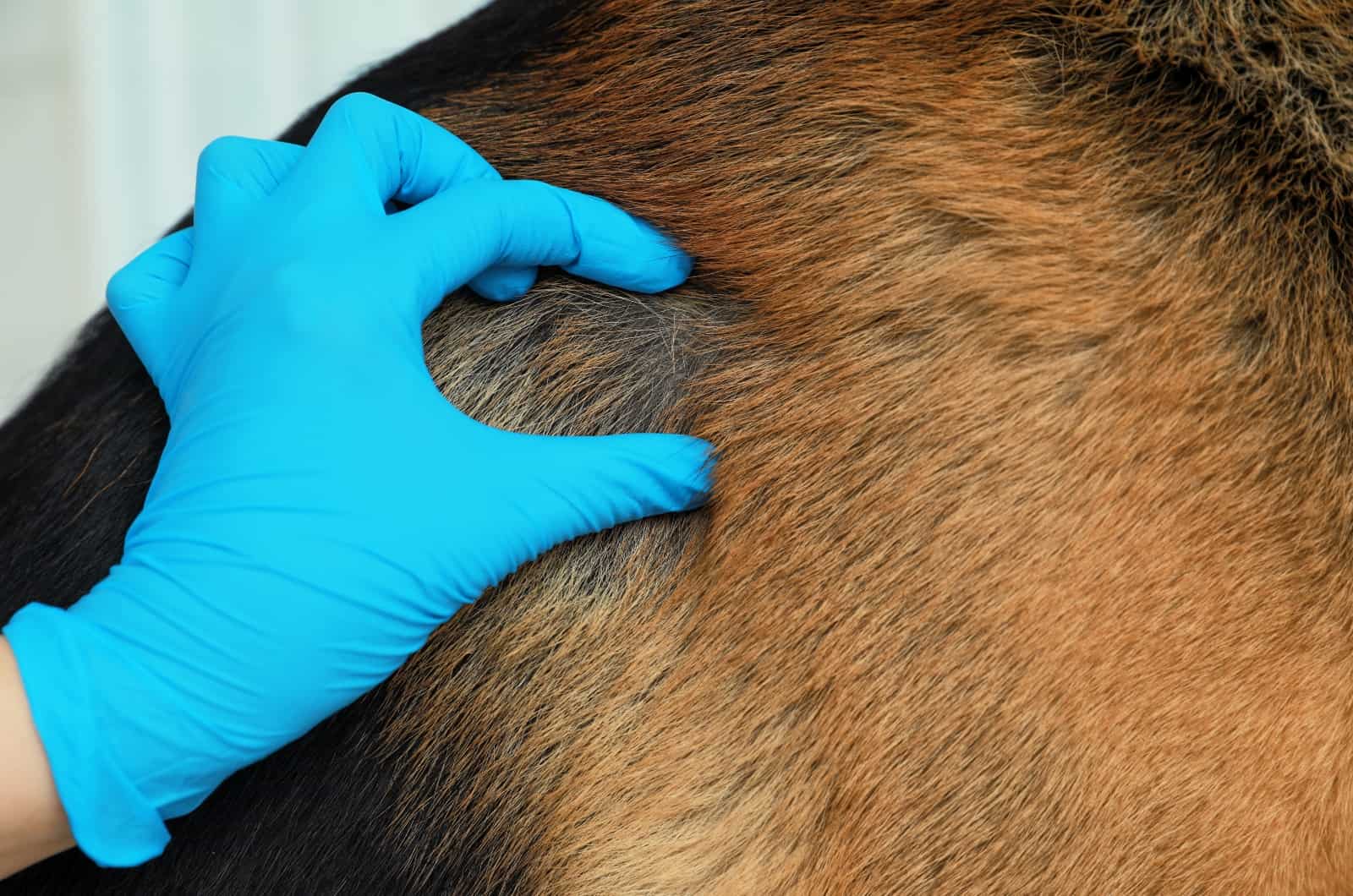
It would be wise to first look for the common signs that we have just described. As soon as you notice your German Shepherd feeling under the weather a while after you’ve been out, you should inspect him for any tick bites.
If you find dry ticks in his fur or a tick scab, then you should contact your veterinarian.
Think of its as the game of “Where’s Waldo”, you have to keep an eye out for the signs and call your vet if you suspect Ehrlichia or any other tick-borne diseases.
How Quickly Do Ehrlichiosis Symptoms Appear?
The incubation period can vary depending on the species of Ehrlichia involved. That said, symptoms of Ehrlichiosis in German Shepherds can appear as early as one week, or they may appear three weeks after the initial infection.
These symptoms vary from dog to dog and may not appear within the same timeframe.
How Long After A Tick Bite Will A Dog Test Positive For Ehrlichia?
Your dog’s immune system will produce antibodies to fight the infection and these antibodies can be used to help determine if the dog has been exposed to Ehrlichia.
It usually takes up to two or four weeks for a dog to test positive for the disease after being infected by a tick carrying Ehrlichia.
However, in some cases, it may take longer for the infection to be detectable by blood tests.
It’s important to note that not all German Shepherd dogs that are bitten by a tick carrying Ehrlichia will develop the disease and some may not test positive until weeks after the infection.
Why Is It Important To Get Your Dog Tested For Ehrlichia?
To know whether or not he is infected, duhh! It is super important to get your German Shepherd tested for Ehrlichia because early diagnosis and treatment can prevent long-term health complications.
Testing for Ehrlichia can also help to identify the specific species of Ehrlichia that may have infected your dog, which is important for determining the appropriate treatment.
What Are The Treatments For Ehrlichiosis?
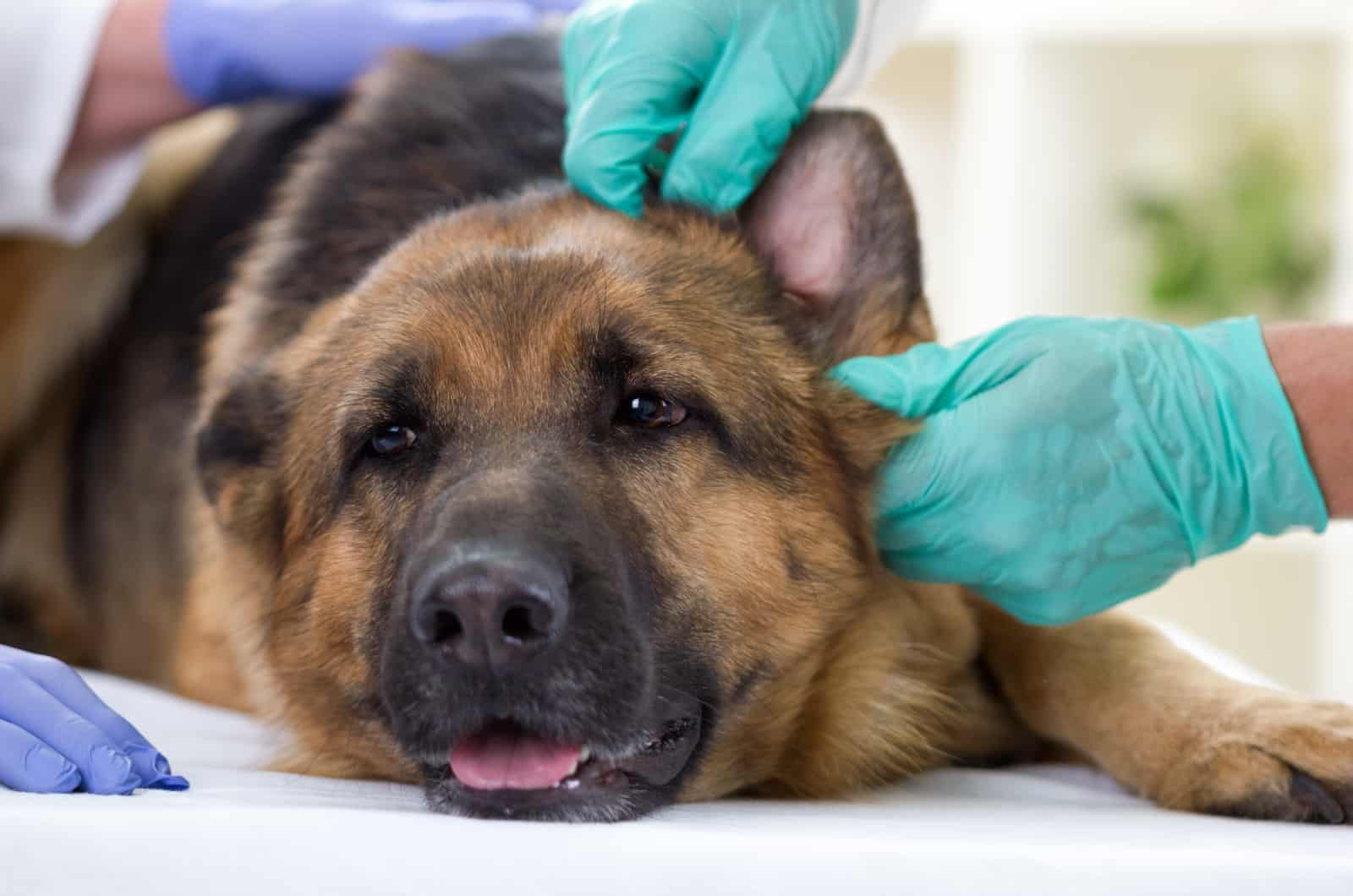
The most common treatment for Ehrlichiosis is a course of antibiotics, like doxycycline, to kill the bacteria and clear the infection. But antibiotics may also kill good gut bacteria, so it is important to give the right amount of the right antibiotic, followed by probiotics.
Your DVM may also recommend a PCR (polymerase chain reaction) test to check for the specific species of Ehrlichia that may have infected your dog, and tailor the treatment accordingly.
Unfortunately, there are severe cases that may require blood transfusions to replace the red blood cells that have been destroyed by the infection.
Additionally, your vet may suggest topical treatment to relieve the symptoms of German Shepherd’s lameness.
How Do I Prevent My Dog From Contracting Ehrlichia?

Of course, the best way to prevent your German Shepherd from contracting Ehrlichia is to protect him from getting bit by ticks! It may sound difficult, but here are a couple of tips that can help:
- Check your GSD for ticks regularly and remove them promptly (always save the removed tick in a small plastic bag for the vet to examine)
- Use tick prevention products such as tick collars, sprays, spot-ons, or topical treatments
- Avoid areas where you know ticks are commonly found, such as tall grass and wooded areas
It is important to consult with a vet if you suspect Ehrlichia or any other related infection like Anaplasma, as proper diagnosis and treatment are a must to prevent long-term damage.













